Huntington Library’s Chinese garden
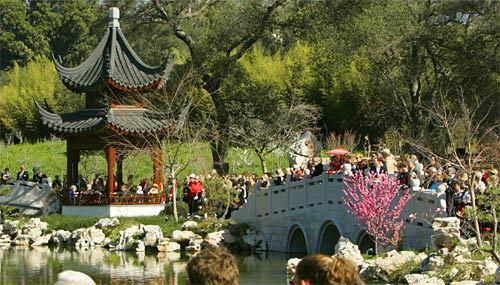
After a decade of work to bring one of the largest classical Chinese gardens outside China to Southern California, dedication ceremonies were held Saturday for Liu Fang Yuan, or the Garden of Flowing Fragrance, at the Huntington Library, Art Collections and Botanical Gardens in San Marino. The invitation-only event was attended by hundreds of dignitaries, donors and supporters. The garden will open to the public Feb. 23. (Annie Wells / Los Angeles Times)
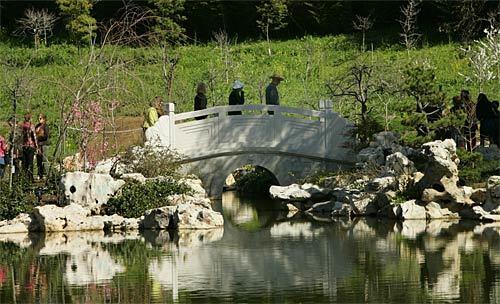
The placid garden links botany with poetry and a scattered ethnic community with the elegant grandeur of its ancient civilization. Hand-carved stone bridges, wooden pavilions and stone terraces feature Chinas centuries-old techniques of master craftsmanship. The garden’s name was inspired in part by a rhapsodic paean to a Chinese river goddess by a poet, Cao Zhi, nearly 2,000 years ago. (Annie Wells / Los Angeles Times)
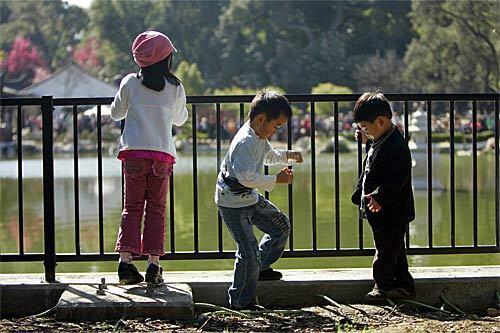
Marissa David, 6, left, looks out at the garden’s shimmering, 1 1/2-acre lake while her cousin Ethan Wong, 5, center, and brother, Joseph David, 4, play during the dedication ceremonies. Their grandmother donated a bridge called the Bridge of Strolling in the Moonlight. (Annie Wells / Los Angeles Times)
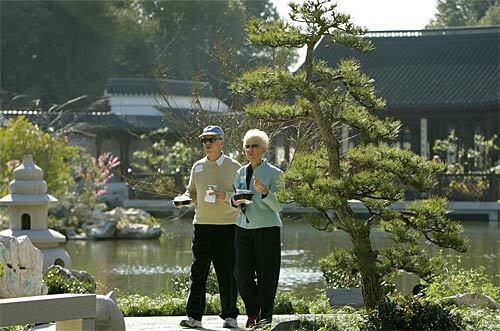
John and Louise Brinsley stroll through the garden, which is modeled after a scholars retreat popularized in the 16th and 17th centuries in the Suzhou area near Shanghai. The garden was designed and largely crafted by ethnic Chinese, including more than 50 stonecutters, wood carvers and other artisans. Most of the materials were shipped from China, including 850 tons of sculptural Tai Hu limestone rocks. (Annie Wells / Los Angeles Times)
Advertisement
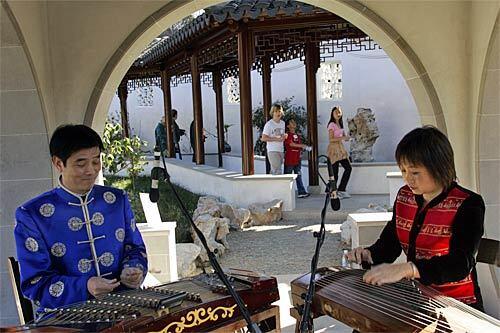
Cynthia Shiang, right, plucks a zither while Zhi Ming Han plays the yang chin, or “foreign zither,” in the Terrace of the Jade Mirror. Curator June Li and an advisory committee of three scholars spent more than a year researching names for the gardens scenic views and structures, plumbing Chinas centuries-old literary traditions. Li says the heart of a Chinese garden is the poetic, literary and artistic associations that give it expressive life. (Annie Wells / Los Angeles Times)
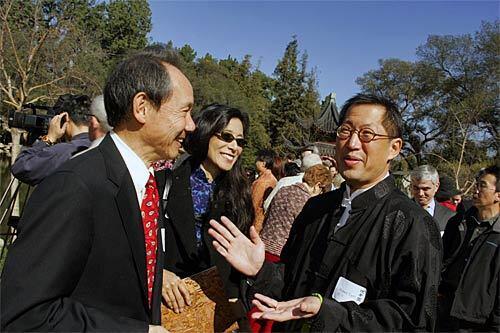
Donors Richard Woo, left, and Julie and Robert Tam were among those at the garden’s dedication ceremonies, held under cloudless blue skies. Woo says he learned during a Huntington lecture on Chinese gardens that one of the most famous belonged to his great-great grandfather. He says the discovery helped him understand the roots of his late-found love for art, and volunteering at the garden has filled in a missing gap in his understanding of his Chinese heritage. Tam says the garden has prompted him to reflect on his own grandfather, a Chinese diplomat who excelled in poetry and art. He says he is now inspired to explore his own artistic nature, possibly through a painting class. (Annie Wells / Los Angeles Times)
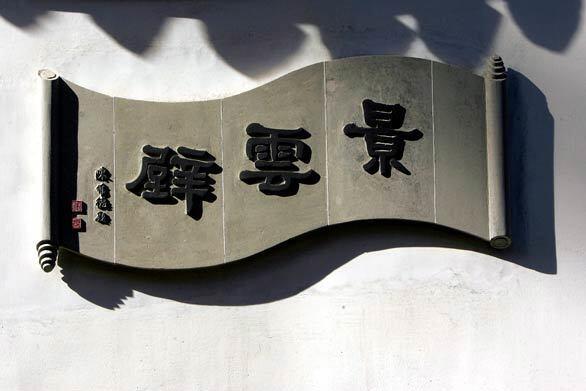
The inscription on the wall encircling the new Chinese garden at the Huntington Library, Art Collections and Botanical Gardens in San Marino reads Jing Yun Bi, or Wall of the Colorful Clouds. (Annie Wells / Los Angeles Times)
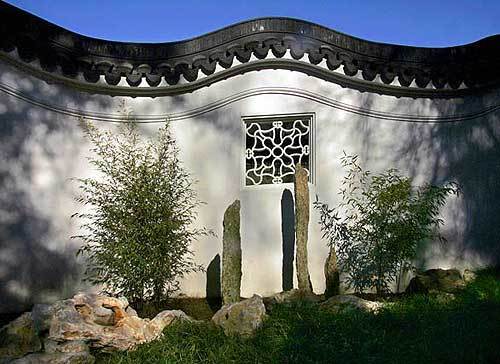
The undulating, soft-white Wall of the Colorful Clouds’ shadowy surface is luminescent, reflecting the light like a pearl. Its dark roof line plays and jumps like summer lightning. Fretwork windows recessed in deep frames punctuate the wall, adding even more depth and shapeliness. (Annie Wells / Los Angeles Times)
Advertisement
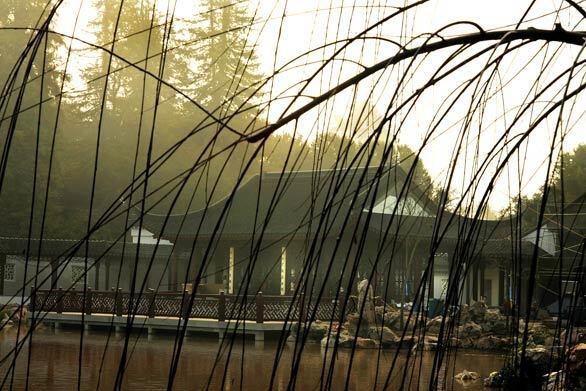
The Terrace That Invites the Mountains and the Hall of Jade Camellia are viewed through willow branches. The Huntington first proposed building a Chinese garden more than two decades ago. A $10-million bequest in 2001 from the estate of the late Peter Paanakker, a Los Angeles businessman, helped launch the actual effort. Major foundations, including the James Irvine Foundation, Starr Foundation and Wallis Annenberg and the Annenberg Foundation, contributed seven-figure gifts. (Annie Wells / Los Angeles Times)
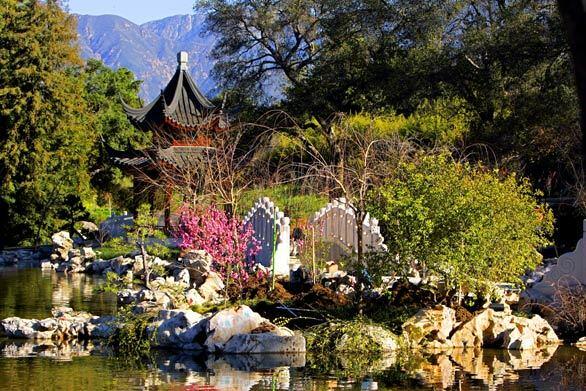
This garden is all about composing a painting, says curator June Li. In landscape painting, she says, mountains represent the eternal, and water represents change; together they make up the harmonious balance of the universe, in which humans are present but dont dominate. (Annie Wells / Los Angeles Times)
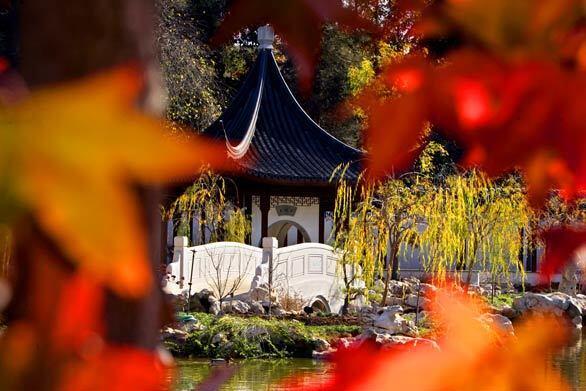
The Bridge of Verdant Mist leads to the Terrace of the Jade Mirror. Reflecting both east and west, the gardens first phase includes a lake, seven pavilions, five hand-carved stone bridges and a canyon waterfall set against a scenic backdrop of the San Gabriel Mountains. (Annie Wells / Los Angeles Times)
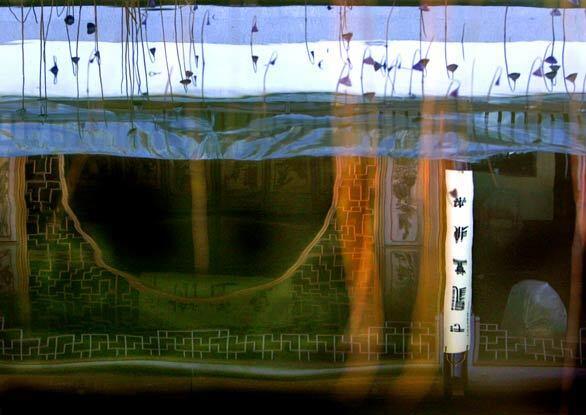
The Love for Lotus Pavilion is reflected in the lake with silhouettes of dried lotuses in the water. The garden contains dozens of plant types, including native Chinese trees and plants. Among them are weeping willows and several flowering trees, whose peach and plum blossoms are now in bloom. (Annie Wells / Los Angeles Times)
Advertisement
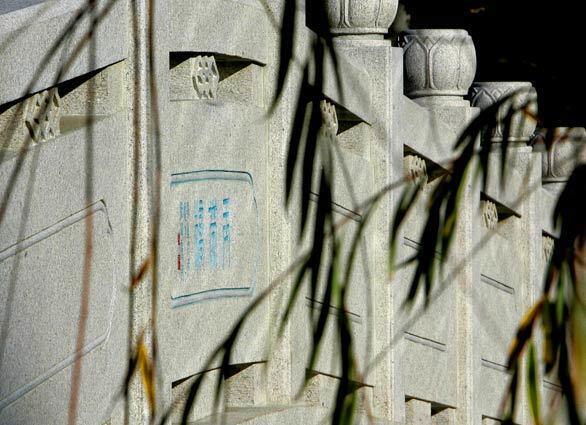
The structures in the garden were carefully named. Here, the calligraphy that identifies the Jade Ribbon Bridge is framed by willows. (Annie Wells / Los Angeles Times)
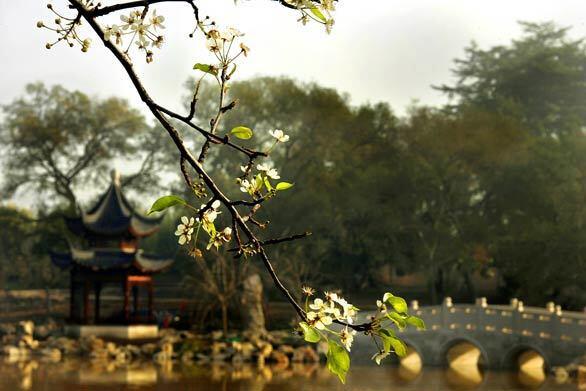
Flowering pear blossoms are part of the garden’s colorful backdrop. In the background are the Jade Ribbon Bridge and Pavilion of the Three Friends. The garden’s plant palette is subtle and elegant. (Annie Wells / Los Angeles Times)
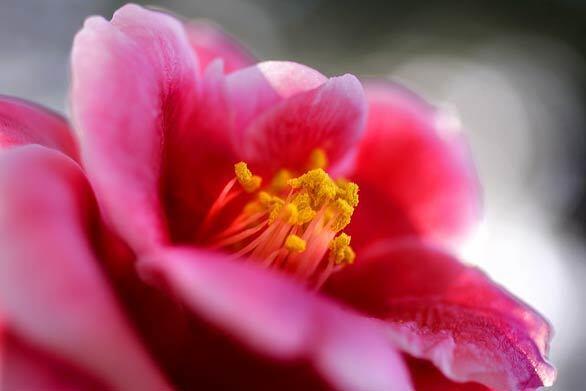
Camellias, including this Camellia japonica, or red tulip, are among the flowers found inside the four-season Garden of Flowing Fragrance. Other plant pleasures of late winter include forsythia, gardenia, primrose jasmine, mahonia and lilac. (Annie Wells / Los Angeles Times)
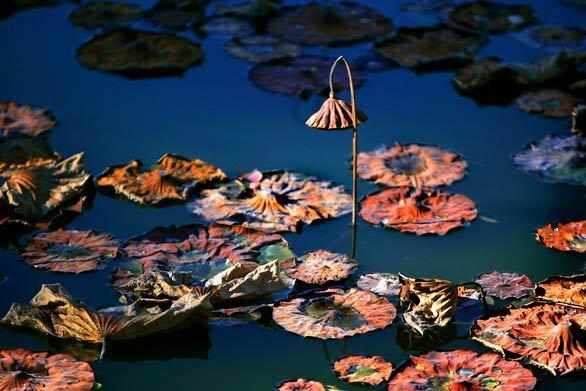
Lotus plants in the lake add a sense of winter to the garden, which contains more than 70 plant types, including indigenous California live oaks and pines, and native Chinese trees and plants. Those include weeping willows and several flowering trees, whose peach and plum blossoms are now in bloom. (Annie Wells / Los Angeles Times)







